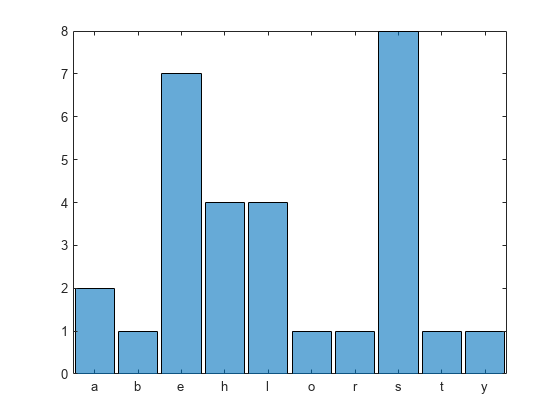pattern
Patterns to search and match text
Description
A pattern defines rules for matching text with text-searching
functions like contains, matches, and
extract. You can build a pattern expression using
pattern functions, operators, and literal text. For example, MATLAB® release names, start with "R", followed by the four-digit
year, and then either "a" or "b". Define a pattern to
match the format of the release names:
pat = "R" + digitsPattern(4) + ("a"|"b");
Match that pattern in a string:
str = ["String was introduced in R2016b." "Pattern was added in R2020b."]; extract(str,pat)
ans =
2x1 string array
"R2016b"
"R2020b"Creation
Patterns are composed of literal text and other patterns using the +,
|, and ~ operators. You also can create common
patterns using Object Functions, which use rules often
associated with regular expressions:
Character-Matching Patterns – Ranges of letters or digits, wildcards, or whitespaces, such as
lettersPattern.Search Rules – How many times the pattern must occur, case sensitivity, optional patterns, and named expressions, such as
asManyOfPatternandoptionalPattern.Boundaries – Boundaries at the start or end of a run of specific characters, such as
alphanumericBoundary. Boundary patterns can be negated using the~operator so that matches to the boundary prevents matching of their pattern expression.Pattern Organization – Define pattern structure and specify how pattern expressions are displayed, such as
maskedPatternandnamedPattern.
The function pattern also creates pattern functions with the syntax,
pat = pattern(txt), where txt is literal text that
pat matches. Pattern functions are useful for specifying pattern type for
function argument validation. However, the pattern function is rarely
needed for other cases because MATLAB text-matching functions accept text inputs.
Object Functions
Examples
Extended Capabilities
Version History
Introduced in R2020b
